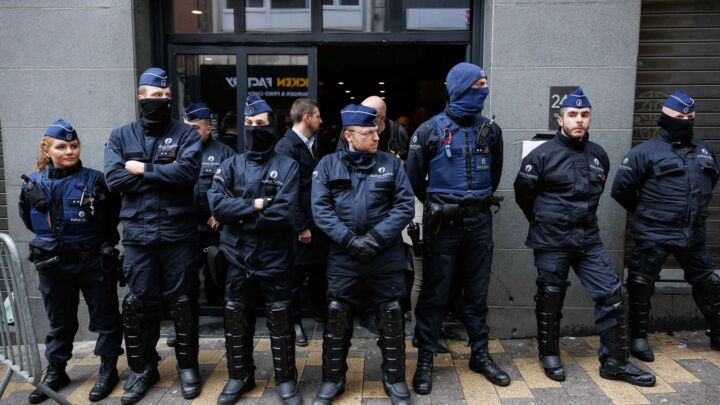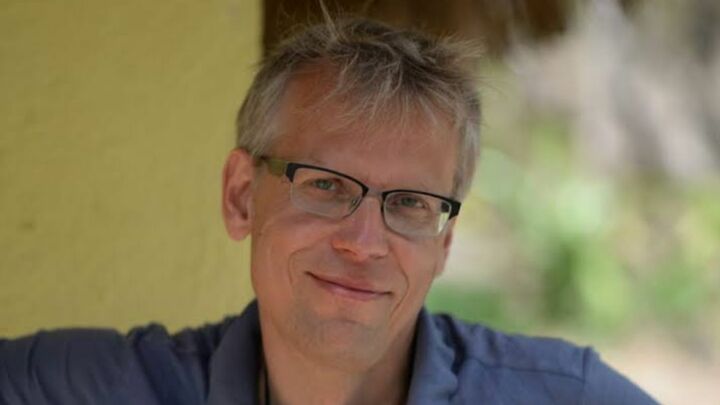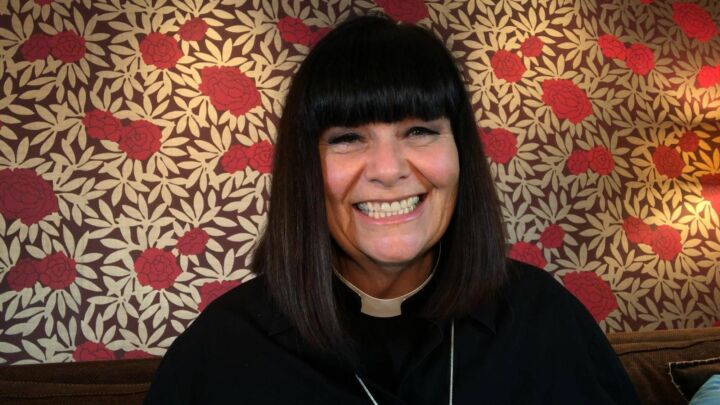World Trade Centre syndrome
We are healthier than ever - but fear is making us ill.

I was at a medical meeting recently, which involved the usual stuff – thousands of doctors, lectures, symposia, posters, its own TV channel, receptions, and so on. The meeting was geared towards public health, and the theme was infectious disease.
In a year in which 2million people died of AIDS, 2million died of TB and 2million died of malaria, it is right that a major meeting of the world’s public health doctors should be geared towards infectious diseases. But what was the main topic of conversation, and dominated the sessions?
Anthrax.
In a way, this is not surprising. Anthrax has caused five deaths, which is of course a tragedy. And the anthrax episode could hardly have had more effect on American public life and institutions. The US government was brought to its knees; half of Congress closed; the postal service effectively shut down. Opening the post apparently became an act as fraught with danger as entering the Chernobyl reactor – indeed , it required the wearing of even more protective equipment. I wonder if the person who did this had any idea of what the response would be – or was it an additional bonus?
The full social and psychological consequences of the anthrax attacks continue to unfold, but no one can doubt they are immense, and seemingly out of proportion to the realistic threat they posed to life and limb.
How have we reached this state of affairs?
Our reactions to the anthrax episode cannot be seen in isolation, or without reference to our general views of health, illness and risk. Similarly, the emergence of ‘World Trade Syndrome’, a vague collection of symptoms among the residents of Lower Manhattan, blamed on various ‘toxins’ released after the collapse of the Twin Towers, only makes sense in the context of a seemingly endless list of other mysterious symptoms and syndromes that are blamed on similar toxic disasters.
Our modern cultural views of health and illness, and the seeming mismatch between the achievements of medicine and our symptomatic malaise, is sometimes referred to as the paradox of health: that the healthier our society is, the more ill we seem to feel.
Symptoms are common in all societies, and are rarely associated with clear-cut medical conditions such as cancer or heart disease. It is an exceptional person who has not experienced at least one somatic symptom, such as headache or fatigue, in the past month. An American study of healthy university students found that no fewer than 81 percent had experienced at least one somatic symptom during the previous three days. Women in south London are said to experience symptoms on one day out of three, chiefly headache and fatigue.
That is well known. What is less well known, as historian Edward Shorter has shown, is that it is getting worse.
In the 1920s, the average American reported 0.8 episodes of serious acute illness per year. By the early 1980s, this had risen to 2.1. Between 1957 and 1976, Americans experienced more decreased activity days, spent more time in bed, and experienced more symptoms.
Why?
Few can doubt we are living in a more medical age. Our expectations of medicine are higher than ever before, because for the first time in human history doctors are actually able to treat and cure some diseases, rather than simply look after the patient (or indeed, actively get in the way of healing).
As the late and much missed Roy Porter told us, the modern medical enterprise is one of the greatest success stories of humanity. When women die in childbirth there is always a confidential and serious inquiry to find out why; the death of children is so rare as to be a national news item whenever it happens; and for the first time, most people have probably never encountered a dead body in the course of their normal lives.
So we expect more from doctors, and we get more – but not as much as we want.
The paradox of health means that although we are healthier, expect and get more from medicine than ever before, and rarely encounter death, we feel worse. Although all object indices of health have improved during this century, and indeed during the last 40 years, our own perception of our health has declined.
We now have a more heightened consciousness of health than before, and a greater likelihood to view somatic distress within medical, rather than social, frameworks. Indeed, it is precisely because we are healthier, with higher expectations of the power of medicine, that we have actively encouraged the spread of medicine into areas where it has not gone before. We medicalise the non-pathological – and this is instituted not just by the medical professions but by the consumers themselves. So the normal symptoms and malaise that are part of the human condition, exacerbated by encounters with adversity such those on and after 11 September, are now more likely to be medicalised.
Who do I blame for this? In the UK, I blame generations of politicians who have been in charge of the health service, and who have found it hard to say ‘enough is enough’ – instead writing ‘patients’ charters’, which perpetuate the idea that unrealistic expectations can be met.
We should also look more critically at the growth and power of the environmental lobby, since this too has not been without its own side effects. People look for explanations of their symptoms. It could be ‘one of those things’, or ‘the flu’, or ‘stress’, or ‘worry’. But research has shown that one explanation in particular is on the increase, and that that the ‘environment’. Increasingly, it is the environment – mystery bugs, toxins, chemicals, pollution, and so on, that is blamed for those non-specific symptoms that have always been with us.
One reason why this has happened is our increasing awareness of risk. Few can doubt that we view the world as more hazardous than before, and are aware of more and more risks and dangers from previously innocent sources.
Nothing in life is safe or familiar any more. Everything we eat, drink, breathe, use at work, or make phone calls with, now seems to pose a risk. We now believe we have the right to live in a risk-free society, which we intellectually acknowledge as an absurd proposition, yet emotionally we take it on board. We feel we cannot accept any risk.
Of course there are such things as environmental disasters. We think of Bhopal, Seveso, Chernobyl…. And we think of the real and unexplained rise in asthma, which is not always a benign condition. But who, for example, were the main casualties of Chernobyl? The 23 fireman killed during the clean up, and the thousands and thousands of foetuses aborted throughout Europe because of an erroneous fear of reproductive risk.
The problem is that the more we fear our environment, the more our general well being suffers, thus providing inadvertent ‘proof’ of the correctness of our perceptions. Psychologists have shown that the more we believe in the malevolent influence of the environment, the more we actually suffer.
The strength of a person’s views about the environment correlate with what happens to them when they are exposed to hazards – and even when they are not. The influential medical journal Science once carried an article entitled ‘The dump that wasn’t there’. It was a description of a community blighted by the discovery the town had been built on the site of an old toxic waste-disposal site. As the news spread, people’s health deteriorated. Except it was a mistake: the dump was actually located many miles away from the community. The malaise which had settled over the inhabitants came not from the toxins, as they thought, but from the erroneous belief that there were toxins around. And even when this mistake was pointed out, the community remained blighted.
Furthermore, our response to what is essentially a social and political problem, rather than a scientific or medical one, is now sanctioned in the ‘precautionary principle’. But where is the evidence that this policy, of deliberate overreaction, has been effective in providing reassurance? Indeed, one can argue that far from reducing those anxieties, it may well have fuelled them (as could have been predicted from basic psychological principles of the uses and abuses of reassurance). We have abandoned proportion, or perspective.
Here is Victorian Leeds, as quoted by Theodore Dalyrmple in his polemic Mass Listeria:
‘It was full of refuse from water closets, cesspools, common drains, dung hill drainings, infirmary refuse, wastes from slaughter houses, chemical soap, gas, dye-houses, and manufacturers, coloured by blue and black dye, pig manure, old urine wash; there were dead animals, vegetable substances and occasionally a decomposed human body.’
Victorian food was grossly contaminated – by strychnine in rum, copper sulphate in pickles and preserves, lead in mustard, ferrous sulphate in tea and beer, lead and mercury in sugar and chocolate. A cartoon in Punch magazine in 1855 shows a little girl approaching a grocer and saying, ‘if you please, sir, mother would like a pound of tea to kill the rats with, and an ounce of chocolate to get rid of the beetles’.
And yet it is now, after a century of legislation to ensure clean air, clean water and unadulterated foods, that 90 percent of American students believe that foods affect how they feel, and that 20 percent of the population believe they have food allergies – even though only one percent actually do. It is now that our buildings are declared sick, that people are allergic to the twentieth century and go and live in oxygen tents, and that Californian department stores declare themselves fragrance-free zones, to prevent the chemically sensitive from collapsing on their premises. It is now that wearing perfume has been made an offence in Halifax, Nova Scotia, and that a man has been charged with attempted murder for exposing his chemically sensitive wife to perfume.
It is against this background that we can start to understand the size and scale of the response to the anthrax episode in the USA.
From a technical perspective, anthrax is a rather poor weapon – like many chemical and biological agents it is unpredictable, hard to deliver, as likely to hurt friend as hurt a foe, and of little military use. This is why governments have signed up to a series of treaties banning it – not solely because of moral outrage, but because they don’t think it is very useful in fighting wars. They don’t ban things such as tanks or automatic rifles, which are useful weapons.
Anthrax is a poor weapon except in one sense – the generation of fear.
Anthrax is exceptionally well-adapted as a weapon of terrorism, in which the aim is not to kill large numbers of people, but to create fear, mistrust and suspicion, and to destroy trust in institutions, especially those designed to protect us.
We only have ourselves to blame for allowing this to happen. Anthraxiety and World Trade Centre Syndrome are the latest consequences of an ideology that tells us that our physical environment is responsible for most of our bodily discomforts and ills. We have created a climate in which a maverick, disgruntled individual can bring a society to its knees by adding anthrax to a letter.
Simon Wessely is professor of psychiatry at King’s College London, and is speaking at the spiked conference After 11 September: Fear and Loathing in the West, on Sunday 26 May at the Bishopsgate Institute in London. See here for full details.
To enquire about republishing spiked’s content, a right to reply or to request a correction, please contact the managing editor, Viv Regan.







Comments
Want to join the conversation?
Only spiked supporters and patrons, who donate regularly to us, can comment on our articles.